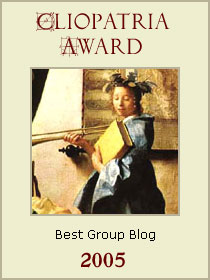A not-too well informed article from the L.A. Times lamenting the decline of lively, slang-filled Cantonese in favor of the polite and dignified Mandarin. Obviously written by someone who has never been to Beijing. Or Tianjin. Or a lot of other places. No doubt a lot of Cantonese speakers do regard the school-ish Mandarin they know as dull, but the analysis is not very strong in the article. The article blames the Mainland government for pushing Mandarin, although the focus is on Chinese in America, where the pushing is obviously of a different sort. Part of what is happening of course is that the new waves of immigrants coming to the U.S. are as likely to be Mandarin speakers as not. 20 years ago my Mandarin was almost useless in American Chinatowns (Actually, 20 years ago my Mandarin was almost useless anywhere.) Now I almost never hear Cantonese. The interesting thing to me is the difference between today and the survival of Cantonese (and Fujianese, etc.) in the past.
Mandarin obviously works better if you have a community of lots of Chinese from different places, which is more likely now with cheaper transport and closer contacts with China. (One of the people learning Mandarin in the article was doing so to be able to speak to his grandkids in China.) The strange thing is that for a very long time Cantonese worked just fine to hold together business networks and families and such. Now if you insist on staying in the Cantonese ghetto you are sacrificing a lot, and people are leaving.
Why the change? Part of it I suppose is velocity. People moving around a lot more and communicating cheaper and quicker make it harder for a minority dialect to maintain its kingdom. Part of it is probably a political change. Hong Kong is no longer the gateway to China in the same way it was, nor are the Cantonese particularly likely to be the interpreters of the West to China. China is all open now, and Canton no longer has a special position.
I suspect part of it is that family and provincial ties are also less important than they were in 1906. The idea of continuing your Chinese studies in school is no longer just fillial piety for Asian Americans, and of course that means Mandarin. Is there anything else driving this? I know the Singapore government has been pushing Mandarin for a long time. What’s happening in Australia? Even better, what is happening in Indonesia, where acting like a trans-national Chinese might not be a good idea.


